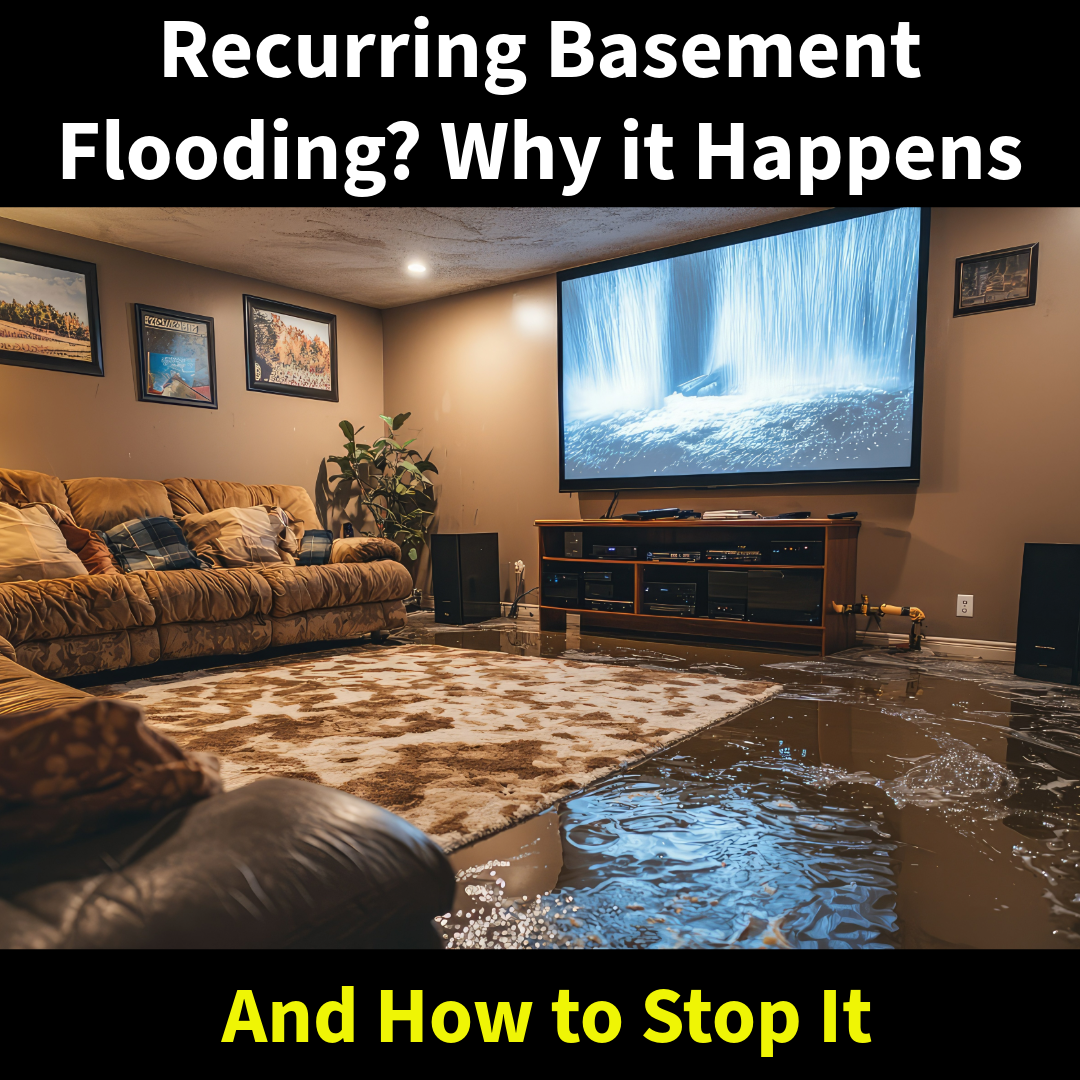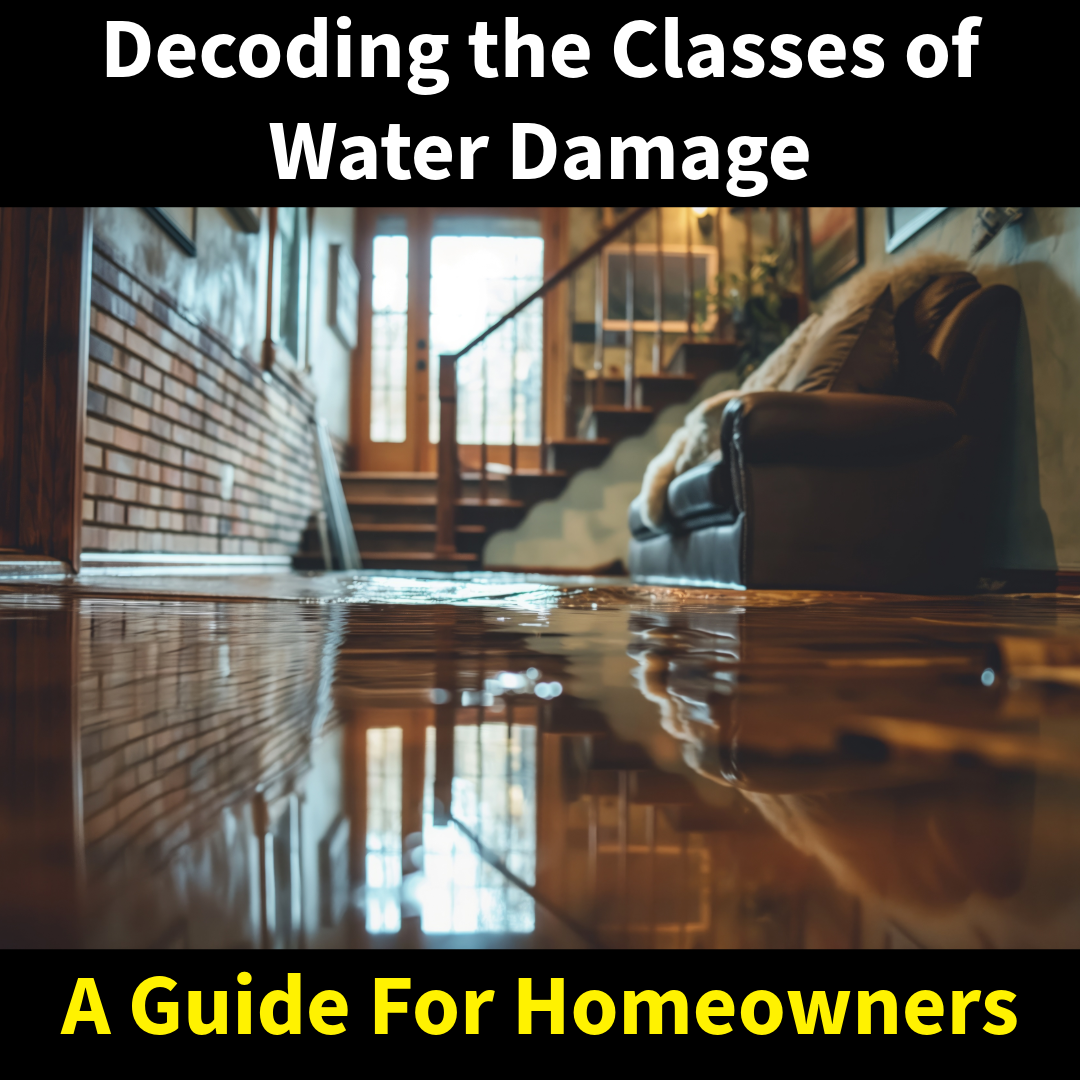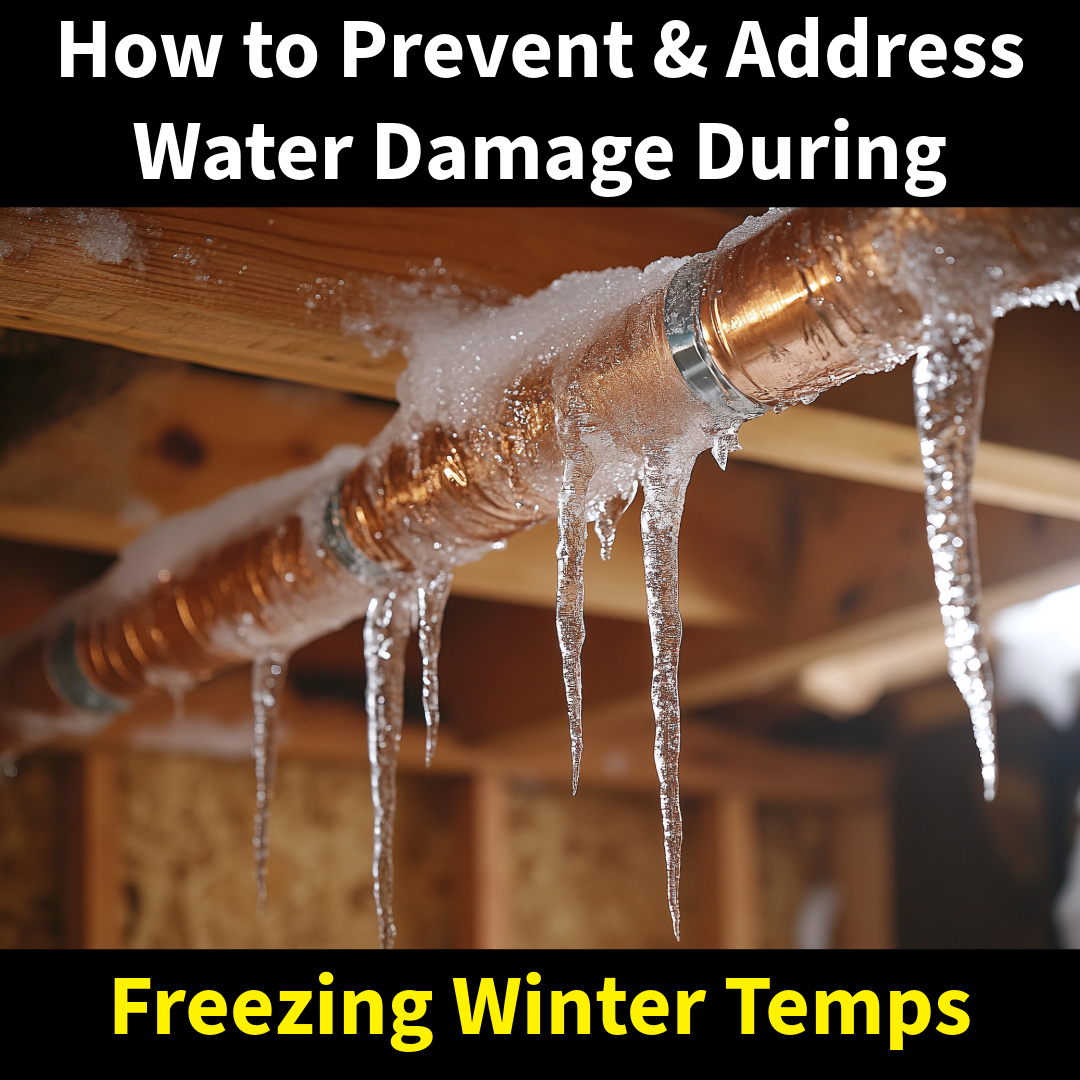Over this past weekend, much of the region experienced significant snowfall, with up to 6 inches reported in parts of Philadelphia, Delaware County, Bucks County and Chester County, including West Chester, Newtown Square, Media, New Hope and surrounding communities. While most homeowners were focused on clearing driveways and staying warm, freezing temperatures and heavy snow can quietly cause hidden water damage inside homes—damage that often goes unnoticed until it becomes a much bigger problem.
Winter-related water damage is especially dangerous because it can remain concealed for weeks, slowly saturating building materials and increasing the risk of mold growth and structural damage.
How Freezing Temperatures Damage Plumbing
When temperatures drop below freezing, water inside pipes expands as it turns to ice. This expansion places significant pressure on pipe walls, fittings, and joints—particularly in exterior walls, basements, crawlspaces, garages, and other unheated areas.
Even if a pipe does not fully burst, freezing conditions can cause small cracks or weakened joints that begin leaking once temperatures rise and the ice melts.
Common Areas Where Winter Water Damage Occurs
Freezing temperatures and heavy snowfall often lead to water intrusion in places that are not immediately visible. During inspections, these are some of the most common areas where winter-related water damage is found:
- Plumbing lines located in exterior walls
- Basement ceilings and walls below bathrooms or kitchens
- Crawlspaces and rim joists
- Garages and unheated utility rooms
- Attics affected by snow melt and ice dams
- Ceilings below roof valleys, chimneys, and flashing areas
- Areas near exterior hose bibs and shutoff valves
These locations often allow water to spread behind finished surfaces, making damage difficult to detect without proper moisture testing.
Why Burst Pipes and Leaks Aren’t Always Obvious Right Away
Many homeowners expect winter plumbing failures to cause immediate flooding, but most winter-related leaks are far less dramatic. In many cases, water escapes slowly and travels into wall cavities, under flooring, or above ceilings.
Because cold weather can limit evaporation, moisture often remains trapped, allowing damage to progress quietly before any visible signs appear.
Snow Melt, Ice Dams, and Hidden Roof Leaks
Heavy snowfall—such as what we saw this weekend—can also create water damage from above. As snow melts and refreezes, ice dams can form along roof edges, preventing proper drainage.
When this happens, water can be forced beneath shingles and roofing materials, entering attics and wall cavities. This type of damage often goes unnoticed until staining or mold becomes visible weeks later.
Why Water Damage in Winter Often Goes Unnoticed
Cold temperatures can give homeowners a false sense of security. Heating systems may dry the surface of materials while moisture remains trapped deeper inside walls, insulation, and subfloors.
Without professional moisture mapping, hidden water damage can remain present long after the weather improves.
How Undetected Moisture Leads to Mold Growth
Once temperatures stabilize and indoor conditions warm up, trapped moisture creates an ideal environment for mold growth. Mold does not require standing water—only sustained moisture and organic materials.
This is why mold problems frequently appear weeks after a winter leak, long after the initial event has been forgotten.
When to Call a Professional After Freezing Temperatures or Snowfall
If your home experienced frozen pipes, water pressure changes, roof snow buildup, or recent thawing—especially after this weekend’s snowfall—it’s important to have the property evaluated.
A professional inspection can identify hidden moisture, document damage for insurance purposes, and help prevent long-term mold and structural issues.
The Bottom Line
Freezing temperatures and snowstorms do more than impact travel and utilities. They can quietly damage plumbing systems, roofs, and building materials, leading to hidden water damage that worsens over time.
Addressing potential issues early—before mold or structural damage develops—can save homeowners significant time, expense, and frustration.









